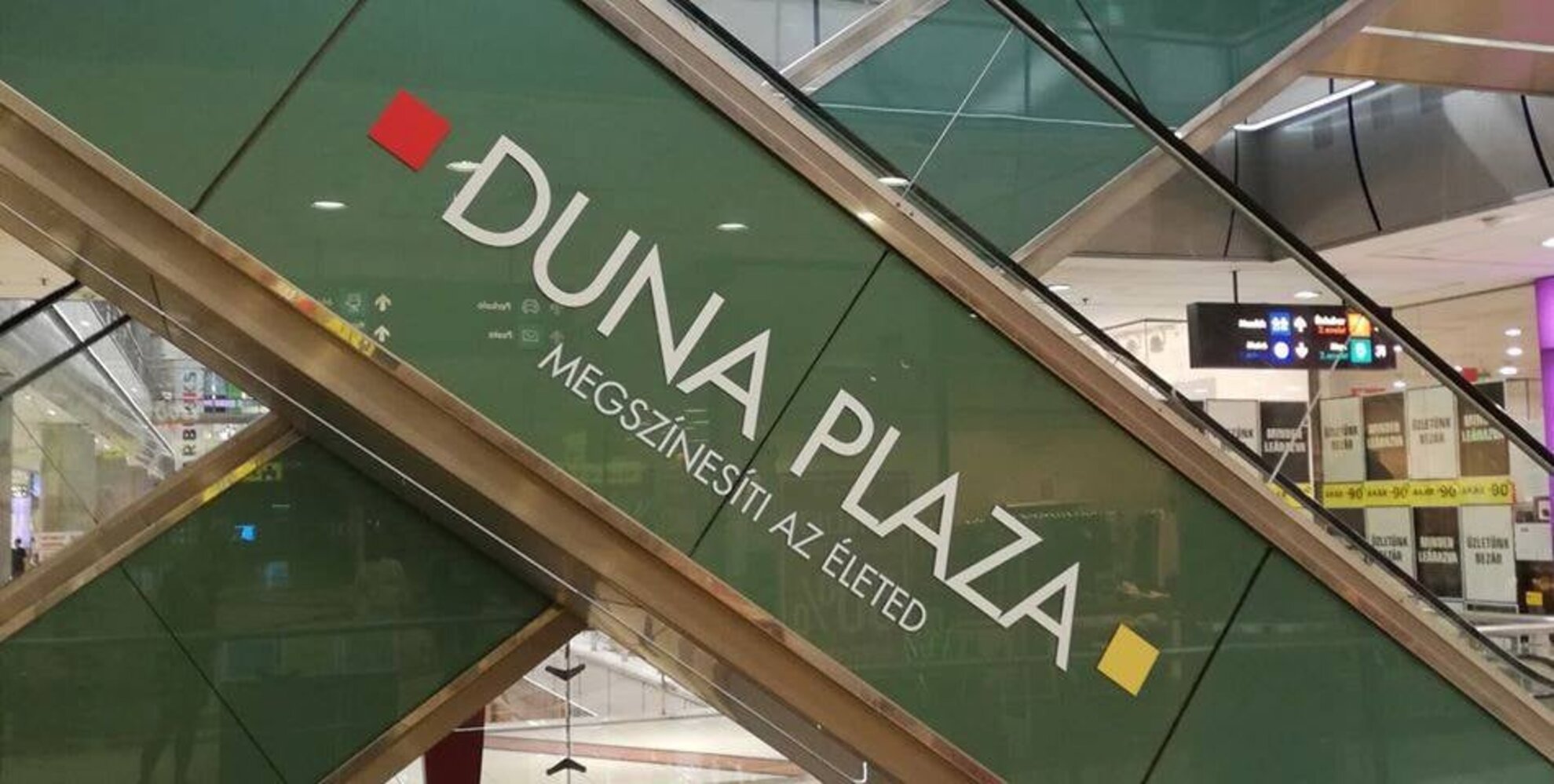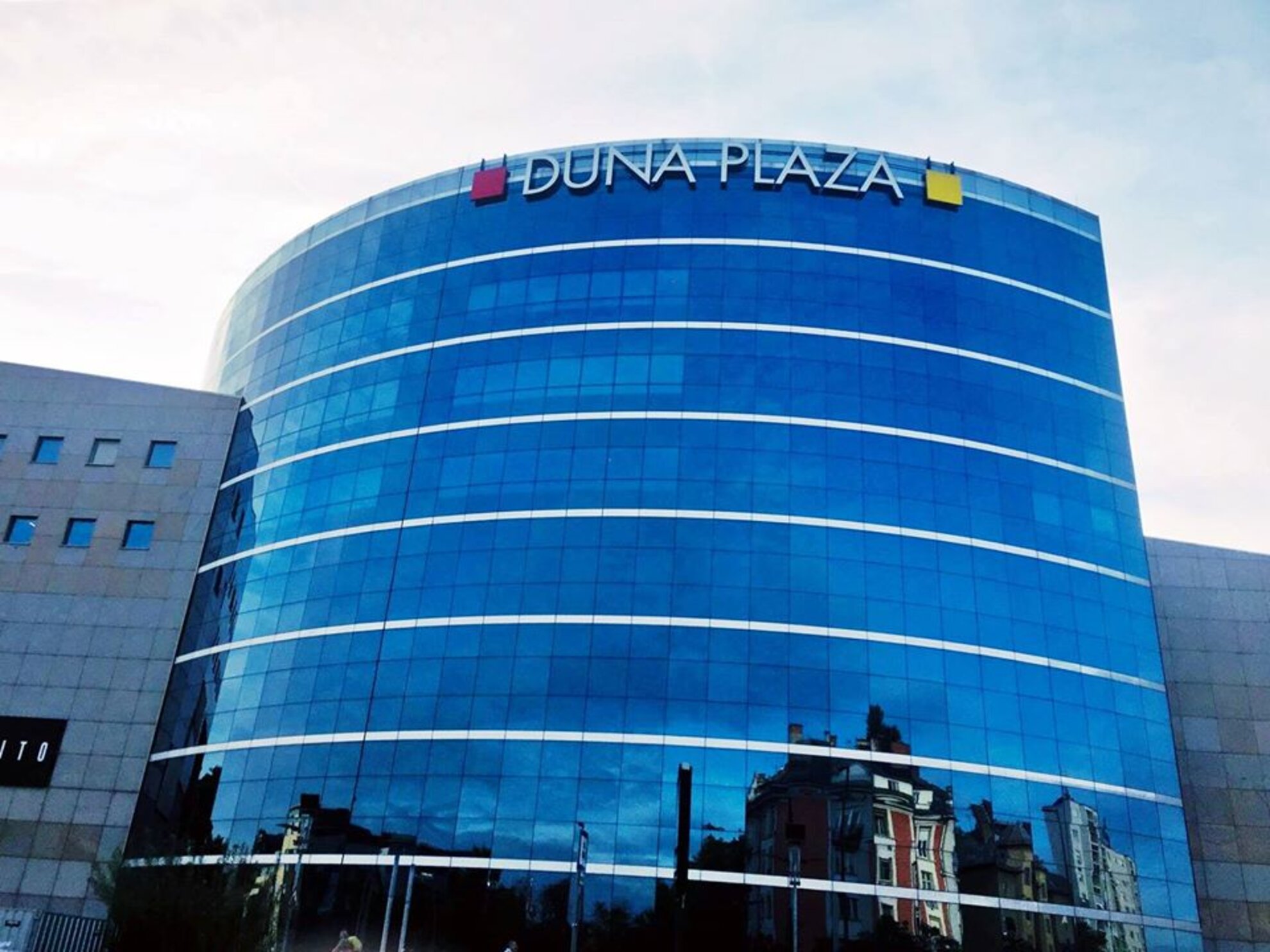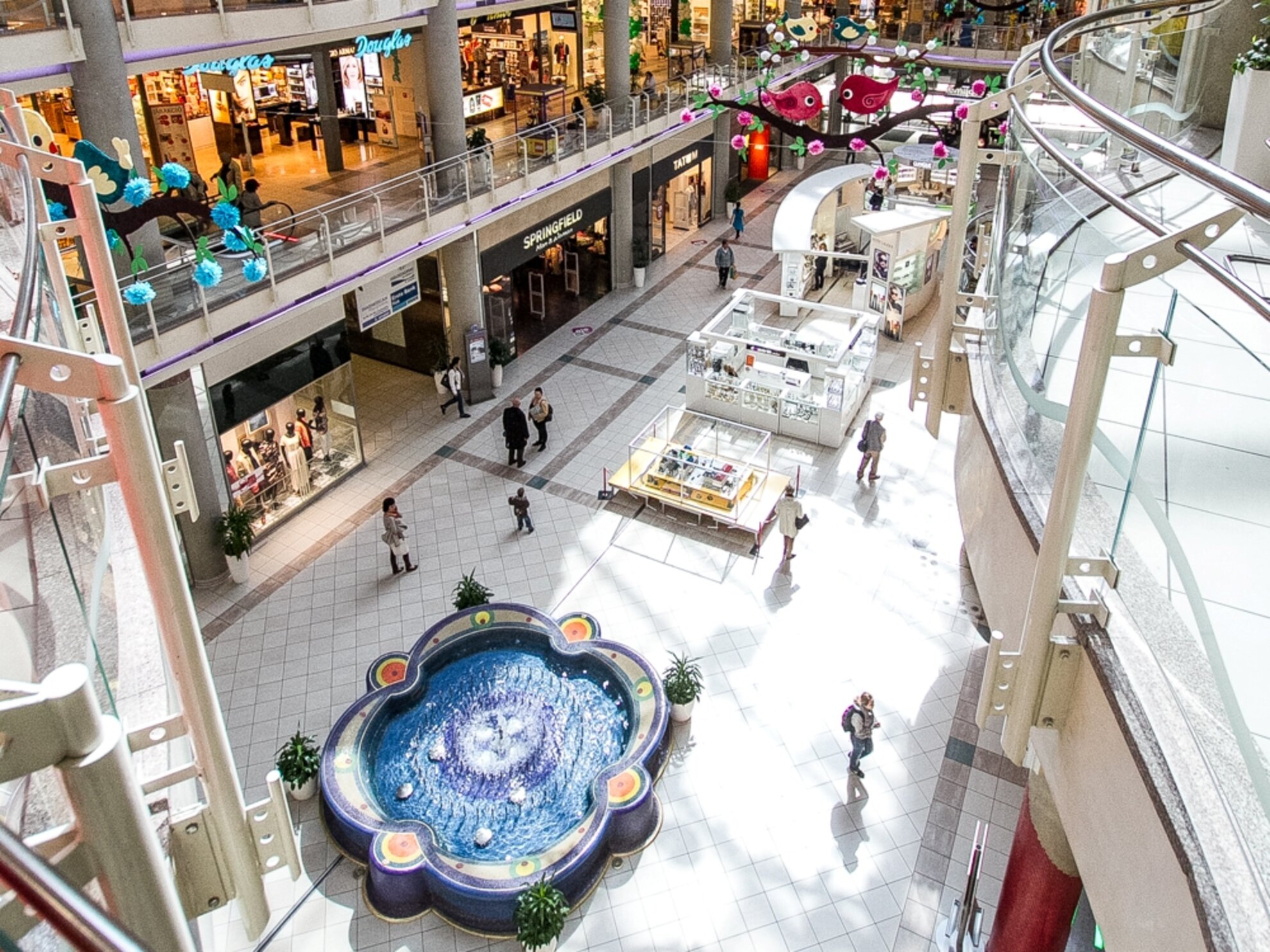Western-style malls arrived several years after the change of regime in Hungary in 1989. Known as here as ‘pláza’ after the first American mall in the 1920s, the modern shopping centre changed the way the city consumed and spent its free time. We look back at the pioneering Duna Plaza, unveiled in 1996 – half-ready but just ahead of its nearest competitor, the Pólus center.
Shopping passages and covered bazaars were a feature of fin-de-siècle Budapest, most notably Haris-bazár and the Brudern House where the Párisi udvar is today, along with the Goldebergers’ Párisi Department Store on Andrássy út and the Corvin Department Store, which opened in 1926. The Socialist era had its own version of the Western shopping malls, the Verseny, the Csillag, the Úttörő and others, and later the Skála and Centrum department stores, but not even the Flórián or SUGÁR could compete with their peers beyond the Iron Curtain.
A taste of the West arrived in the 1980s, queues snaking outside the adidas store on Váci utca when it opened in 1987, and the first McDonald’s in 1988, serving 10,000 customers on its first day.
Plazas past and present
The first modern mall designed for shopping by car was the Country Club Plaza in Kansas City. Modelled after classic Moorish buildings in Seville, it became known simply as the Plaza, the word that Hungarian now uses for ‘mall’. Indeed, when designing the kind of self-contained mall we know today, Highland Park Shopping Village in Dallas, planners went to major public squares in Spain, plazas, to see how they functioned.
Here in Budapest, the construction of the Duna Plaza started in 1994, a Hungaro-Israeli investment. The plot on Váci út in north Pest was where the industrial complex of Ganz Boiler and Crane Manufacturers once stood, and transport connections were excellent. The last section of metro line 3 had opened in 1990, including Gyöngyösi utca station right alongside the proposed mall.
The complex of 37,000 square metres was completed in two years, despite a major raid by the Ministry of Labour, involving 120 police officers and 30 inspectors, which managed to remove 500 illegal workers. One poor labourer fell into a lift shaft who had to be hoisted up with the help of a vacuum bed and rushed to hospital.

The Duna Plaza and the malls themselves sharply divide people to this day. There were plenty of opponents from the very beginning, but at least as many who have sought solace in the modern-day Hungarian mall. Teens gather, coffee-drinkers convene and many shop. The word pláza came into the local vernacular, sociologists and architects turning their expertise towards interpreting the genre.

Designed by Attila Szabó Soproni, the Duna Plaza building is one of the more creative postmodern giants, with no little imagination used in the façade in terms of form and use of materials. He tried, at least, to avoid plonking a huge box beside busy Váci út. When this glass palace in Angyalföld was unveiled in 1996, the press waxed lyrical about bread and circuses:
“The domed, three-storey, street-like interior of the building hides a skating rink open in winter and summer, a cinema with nine screens, and a ten-lane bowling alley. A pool hall, games arcade and a casino for the reckless complement Hungary's most state-of-the-art post office, a bank, chemists, cobblers, dry-cleaning and other services all await.” (Fejér Megyei Hírlap, 8 October 1996)
The opening, pushed back to 14 October, generated no little hype. Although some parts of the building weren’t quite finished, they couldn’t wait any longer as the main competitor, the Pólus across north Pest, was nearly complete. The Duna Plaza was unveiled in the presence of a children’s choir, a large orchestra playing a Viennese waltz and then Prime Minister Gyula Horn, as well as 160 Israeli businessmen to discuss further investments.
Footage even exists of the opening day.
Just over a couple of weeks later, on 8 November, the Pólus center opened on the site of a former Soviet barracks. It surpassed the Duna Plaza in size and proclaimed itself as the largest shopping, service and entertainment centre in Central and Eastern Europe. There were also indoor skating rinks, skittles and bowling alleys, a cinema and an arcade, but the main attraction was the plastic cowboy-themed restaurant section called Western City.
Totally Western!
“Totally Western! And not only in terms of the quality of the stores but also the range of goods. The provision of global brands is almost complete, refrigerators, washing machines, colour televisions, video cameras and sportswear.” (Zalai Hírlap, 16 December 1996)

After these early birds, more and more plazas were built at a rapid pace. In 1997 came Euro Park and Lurdy Ház, then big ones like Mammut in 1998, before the WestEnd a year later. The early 2000s brought the MOM, Árkád, Arena and Allee, the Corvin Pláza in 2010, then KÖKI.
Although there were plenty of other plans, the so-called Pláza Act was passed in 2012, preventing a the building of any commercial facility with a floor space larger than 400 square metres. In addition, they could not expand existing ones, only modernise them. Now, after many years, it seems that a mall in Etele tér, Kelenföld, will be built after all.




